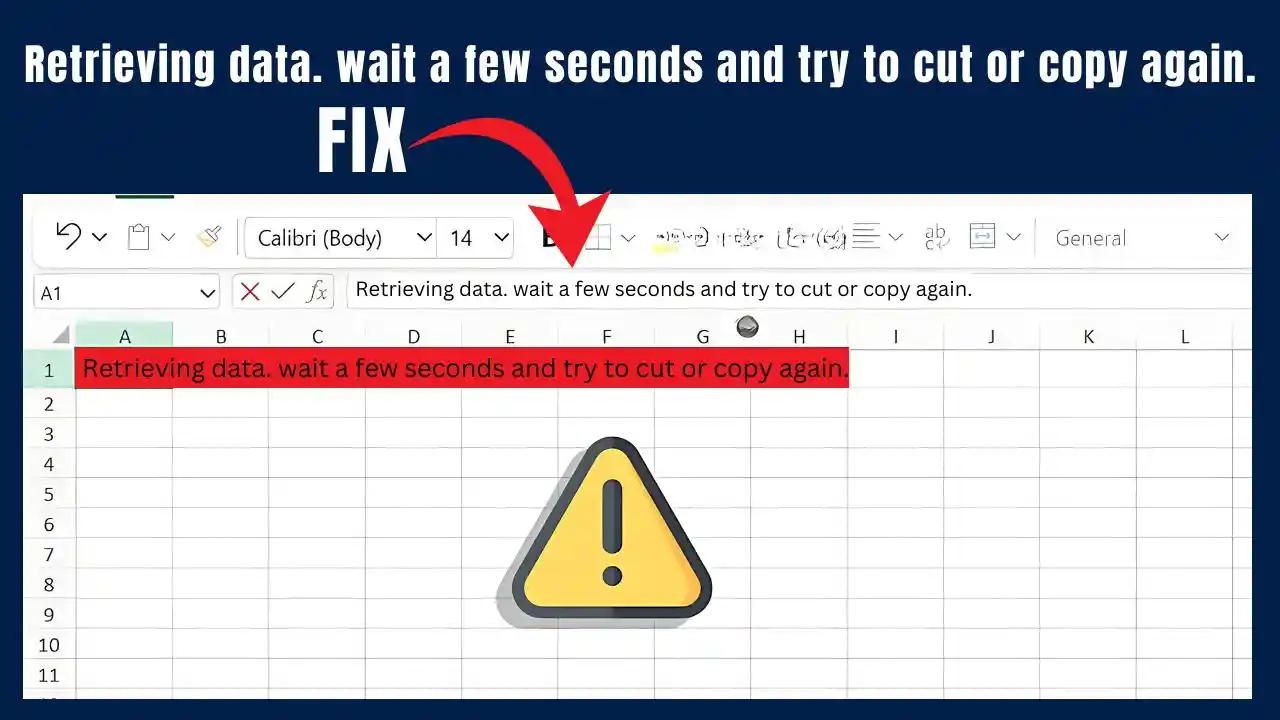Retrieving data can sometimes lead to delays. Wait a few seconds and try to cut or copy again for optimal results.
Retrieving data can often be a straightforward task. However, issues may arise, leading to delays. Understanding how to manage these situations is crucial for smooth operations. This article discusses effective methods for retrieving data, especially when faced with interruptions.
Understanding Data Retrieval
Data retrieval refers to the process of accessing and collecting information from a database or server. This can involve various methods, including API calls, database queries, and file system access. Each method has its advantages and challenges.
Common Methods of Data Retrieval
- API Calls
- APIs (Application Programming Interfaces) allow applications to communicate with each other.
- They enable the retrieval of data from remote servers.
- Example: Using REST APIs to fetch blog posts.
- Database Queries
- Databases store structured data.
- SQL (Structured Query Language) is commonly used to retrieve data.
- Example: A SQL query can fetch user information from a database.
- File System Access
- Data can also be stored in files on a server.
- Reading files directly can be efficient for smaller datasets.
- Example: Markdown files containing blog content.
Challenges in Data Retrieval
Retrieving data is not always seamless. Users may encounter various issues, such as:
- Network Delays: Slow internet connections can hinder API calls.
- Server Load: High traffic can lead to server overload, delaying responses.
- Authentication Issues: APIs often require authentication, which can complicate access.
When these challenges arise, users might see messages prompting them to “wait a few seconds and try to cut or copy again.” This indicates that the system is processing requests but needs time to complete them.
Best Practices for Efficient Data Retrieval
To minimize delays and improve efficiency in retrieving data, consider the following strategies:
Optimize API Calls
- Batch Requests: Instead of making multiple individual requests, batch them into one call when possible. This reduces the number of round trips to the server.
- Use Caching: Store frequently accessed data locally to reduce the need for repeated API calls.
Streamline Database Queries
- Indexing: Ensure that your database tables are indexed properly. This speeds up query performance significantly.
- Limit Data Returned: Use queries that only return necessary fields instead of fetching entire records.
Enhance File System Access
- Read Files Asynchronously: When accessing files, use asynchronous methods to avoid blocking operations.
- Organize Files Efficiently: Keep your file structure organized to make it easier to locate and retrieve data quickly.
Handling Delays Effectively
When delays occur during data retrieval, it’s essential to manage user expectations:
- User Feedback:
- Provide clear messages indicating that the system is processing their request.
- Use loading indicators or progress bars to show activity.
- Retry Mechanisms:
- Implement automatic retries for failed requests after a brief wait period.
- Allow users the option to manually retry if they encounter issues.
- Graceful Degradation:
- If real-time data cannot be retrieved, offer cached or static content as an alternative.
- Ensure that users still have access to valuable information even during outages.
Informative Table on Data Retrieval Methods
| Method | Description | Advantages | Challenges |
|---|---|---|---|
| API Calls | Fetches data from remote servers | Real-time access | Network dependency |
| Database Queries | Retrieves structured data from databases | Fast access with indexing | Complexity in query design |
| File System Access | Reads data directly from files | Simple for small datasets | Slower for large files |
Retrieving data effectively requires understanding the methods available and managing potential delays. By optimizing API calls, streamlining database queries, and enhancing file system access, users can improve their experience significantly. When faced with interruptions, it’s crucial to provide clear feedback and options for retrying requests. Remember, when encountering issues, waiting a few seconds and trying again might just do the trick.



